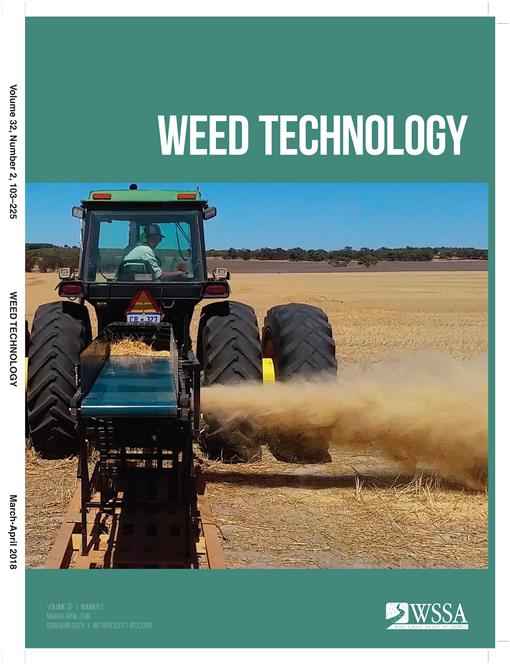Little information is published related to seed germination and seedling emergence of Japanese foxtail, a troublesome annual grass weed widely distributed in winter wheat fields in China. Three Japanese foxtail populations were studied under laboratory and greenhouse conditions, to determine the effects of different environmental factors on seed germination or seedling emergence. Chemical control is absolutely necessary in integrated management, and efficacy of POST herbicides against different growth stages of Japanese foxtail was evaluated. Germination rate was 90% or more when temperature ranged from 5 to 25 C, with germination onset shortened as temperature increased. Light was not required for germination to occur. For pH values ranging from 5 to10 there was no effect on seed germination. Japanese foxtail seed germination was sensitive to osmotic stress and completely inhibited at an osmotic potential of -1.1 MPa. The ‘1513’ population of Japanese foxtail demonstrated tolerance to soil salinity, with 98% germination at 80 mM NaCl compared with 25 and 40% germination for populations ‘1532’ and ‘1544’, respectively. High amounts of crop residue (10 t ha-1) suppressed Japanese foxtail emergence 38 to 55%. Germination of seeds placed at 160 C for 5 min was completely inhibited for dry seeds, with a similar effect at 130 C for pre-soaked seeds. Seed burial in the soil from 0 to 4 cm had no effect on seedling emergence, but burial at 7cm completely inhibited seedling emergence. POST herbicides mesosulfuron-methyl (13.5 g ai ha-1), clodinafop-propargyl (67.5 g ai ha-1), pyroxsulam (13.5 g ai ha-1), pinoxaden (67.5 g ai ha-1) and isoproturon (1125 g ai ha-1) reduced plant dry weight 80% or more when applied at three- to seven-leaf stage, but control declined with application at later growth stages. The information from this study helps to develop an integrated approach to Japanese foxtail management.
Nomenclature: Clodinafop-propargyl; isoproturon; mesosulfuron-methyl; pinoxaden; pyroxsulam; Japanese foxtail; Alopecurus japonicus Steud ALOJA.





